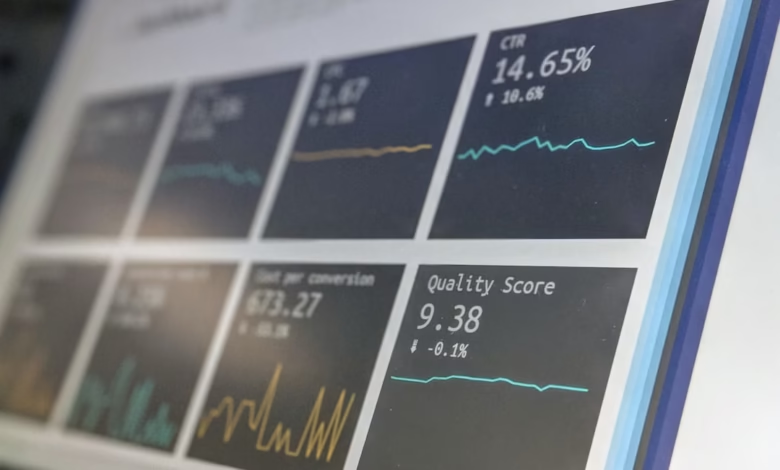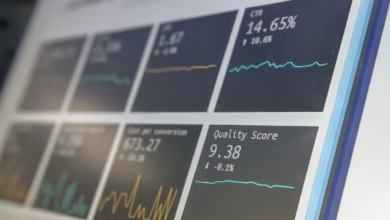Mastering CFD Trading: Strategies, Risks, and Analysis for Success in Online Trading

In today's fast-paced financial landscape, CFD trading (Contract for Difference) has emerged as a popular method for speculating on price movements without the need to own the underlying asset. This innovative approach allows traders to engage in various markets, including stock trading, forex trading, and commodities trading, all from the comfort of their own homes. With the rise of online trading platforms, traders of all experience levels can leverage this powerful tool to enhance their portfolios.
However, while CFD trading offers enticing opportunities for profit through strategies like day trading and swing trading, it also comes with inherent risks that necessitate a solid understanding of market dynamics. In this article, we will delve into the key components of CFD trading, exploring its advantages and risks in online trading, effective strategies for success, and the critical role of both technical and fundamental analysis in making informed trading decisions. Whether you're interested in high-frequency trading, copy trading, or navigating the complexities of derivatives trading, our comprehensive guide will equip you with the knowledge needed to thrive in this dynamic environment.
- 1. Understanding CFD Trading: Advantages and Risks in Online Trading
- 2. Key Strategies for Successful CFD Trading: From Day Trading to Swing Trading
- 3. The Role of Technical and Fundamental Analysis in CFD Trading Decisions
1. Understanding CFD Trading: Advantages and Risks in Online Trading
CFD trading, or Contract for Difference trading, has become increasingly popular among traders in various markets, including stock trading, forex trading, and commodities trading. This innovative trading method allows participants to speculate on price movements of underlying assets without actually owning them. While CFD trading offers several advantages, it also comes with notable risks that traders must understand to navigate this landscape effectively.
One of the primary advantages of CFD trading is the ability to use leverage. Traders can open positions that are significantly larger than their initial investment, which means that even small price changes can lead to substantial profits. However, leverage trading also amplifies potential losses, necessitating robust risk management strategies. Traders should be well-versed in techniques such as setting stop-loss orders and diversifying their portfolios to mitigate risks associated with margin trading.
Another benefit of CFD trading is the flexibility it offers. Traders can engage in various trading strategies, including day trading, swing trading, and even scalping, across multiple asset classes such as indices, cryptocurrencies, and futures trading. This versatility allows traders to adapt their approaches based on market conditions and personal preferences. Additionally, online trading platforms provide tools for technical analysis and fundamental analysis, enabling traders to make informed decisions.
However, CFD trading is not without its drawbacks. The complexity of derivatives trading can overwhelm novice traders, particularly when trying to understand trading psychology and market analysis. It is essential for traders to invest time in learning about different trading strategies and the nuances of high-frequency trading and algorithmic trading before entering the market. Furthermore, the risk of significant losses due to market volatility must be taken seriously, especially in fast-paced environments like energy trading and binary options.
In conclusion, while CFD trading presents a compelling opportunity for traders looking to speculate on price movements without owning underlying assets, it is crucial to balance the advantages with an awareness of the inherent risks. By employing sound risk management practices and staying informed about market trends, traders can navigate the complexities of CFD trading and work towards achieving their financial goals.
2. Key Strategies for Successful CFD Trading: From Day Trading to Swing Trading
When it comes to CFD trading, having a solid strategy is essential for navigating the complexities of price movements without owning the underlying asset. Here are two key strategies that traders often employ to maximize their chances of success: day trading and swing trading.
Day trading is a popular approach that involves executing multiple trades within a single day. Traders capitalize on small price fluctuations in various markets, including stock trading, forex trading, and commodities trading. This strategy requires a strong grasp of technical analysis to identify trends and patterns quickly. Day traders often use leverage trading to amplify their potential gains, but this can also increase the level of risk. Effective risk management strategies are crucial, as traders need to set strict stop-loss orders to protect their capital.
On the other hand, swing trading takes a longer-term perspective, allowing traders to hold positions for several days or weeks. This strategy is ideal for those who prefer a more relaxed pace compared to day trading. Swing traders utilize both technical and fundamental analysis to make informed decisions about price movements. By analyzing market trends and news events, they can identify potential entry and exit points. Additionally, swing trading allows for the use of margin trading, enabling traders to control larger positions with less capital.
Both day trading and swing trading can benefit from the use of online trading platforms that offer tools for market analysis and algorithmic trading. Traders can also engage in copy trading or social trading to learn from experienced traders and implement successful strategies. Whether choosing to focus on high-frequency trading or scalping, understanding trading psychology is vital for maintaining discipline and managing emotions during volatile market conditions.
In summary, successful CFD trading hinges on selecting a strategy that aligns with your trading style and risk tolerance. By mastering day trading or swing trading techniques, along with effective risk management and market analysis, traders can enhance their chances of success in the dynamic world of derivatives trading.
3. The Role of Technical and Fundamental Analysis in CFD Trading Decisions
In CFD trading, the role of technical and fundamental analysis is crucial for making informed trading decisions. Both methods provide traders with the insights needed to speculate on price movements effectively, whether in stock trading, forex trading, or commodities trading.
Technical analysis involves evaluating historical price data and trading volume to identify trends and patterns. Traders often use charts and indicators to determine entry and exit points, which is particularly useful in day trading and swing trading strategies. For instance, tools like moving averages, Relative Strength Index (RSI), and Fibonacci retracement levels can help traders spot potential reversals or continuations in market trends. In high-frequency trading and scalping, where quick decisions are vital, technical analysis can significantly enhance a trader's ability to capitalize on small price changes.
On the other hand, fundamental analysis focuses on the underlying factors that influence asset prices, such as economic indicators, earnings reports, and geopolitical events. For CFD trading, understanding the fundamentals of the assets being traded—whether they are stocks, indices, or even cryptocurrencies—can provide insights that technical analysis alone may miss. For example, an unexpected change in interest rates can profoundly affect forex trading and commodities trading. Traders who incorporate fundamental analysis into their trading strategies can better gauge market sentiment and potential price movements.
Combining both technical and fundamental analysis allows traders to develop a comprehensive market analysis approach. This synergy is particularly beneficial in leveraged trading and margin trading scenarios, where risk management becomes critical. By understanding both the technical indicators and the fundamental landscape, traders can make more balanced decisions, reducing the potential for losses associated with speculative trades.
Lastly, trading psychology plays an essential role in how traders react to the information gleaned from both analyses. The emotional aspects of trading can impact decision-making, especially under volatile market conditions. By relying on a mix of technical and fundamental analysis, traders can build confidence in their strategies and maintain discipline, which is vital for long-term success in online trading platforms.
In conclusion, both technical and fundamental analyses are indispensable tools in CFD trading. Traders who leverage these methods effectively can enhance their trading strategies, improve their risk management practices, and ultimately increase their chances of achieving profitable outcomes in the dynamic world of derivatives trading.
In conclusion, CFD trading presents a dynamic avenue for speculating on price movements without the need to own the underlying asset. By understanding the advantages and risks associated with this derivatives trading instrument, traders can make informed decisions that align with their financial goals. Whether you engage in day trading, swing trading, or explore more advanced strategies like algorithmic or high-frequency trading, the key lies in mastering risk management and leveraging technical and fundamental analysis to guide your market analysis.
As you navigate through various trading options such as stock trading, forex trading, and commodities trading, it’s essential to cultivate a strong trading psychology to weather the inevitable market volatility. Utilizing online trading platforms that support copy trading and social trading can further enhance your approach by learning from experienced traders.
Ultimately, the success of CFD trading hinges on your ability to implement effective trading strategies while remaining adaptable to market changes. Embracing a well-rounded understanding of all aspects, from margin trading to the nuances of energy trading or index trading, will empower you to optimize your trading experience. Keep honing your skills, stay updated on market trends, and remember that every trade is an opportunity for growth in your trading journey.
References:
(Include sources used in the article)





